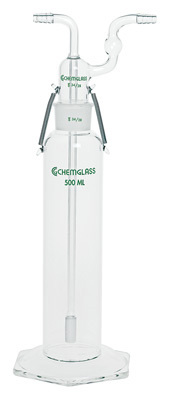| The Home page of ILPI's Safety Data Sheet (SDS) Resource, the leader in SDS information since 1995! | |
| The history and philosophy behind this resource. | |
| A curated collection of books and reference materials concerning Safety Data Sheets and closely related topics. | |
| Paste your plain text SDS into the SDS-Demystifier, and it will be converted into a hypertext-enriched document with links to detailed explanations of each key term. | |
| An extensive list of frequently asked questions about Safety Data Sheets including regulations, content, compliance, and more. | |
| A humorous take on Safety Data Sheet jargon. Fill in the blanks on our entry form to generate a personalized Unsafety Data Sheet to share with your coworkers. | |
| Since 1995, we've maintained this massive curated list of the best places to find Safety Data Sheets on the Internet. | |
| You are here! Way more than a glossary, this hypertext-enhanced resource covers hundreds of SDS-related terms and expert knowledge. Each entry includes both the SDS relevance and links to additional authoritative resources. | |
| Archived results of Safety Data Sheet related polls taken by some of our millions of site visitors | |
| The OSHA regulations behind SDS regulations, including the inspection guidelines and over 400 official interpretations letters under the Hazard Communication Standard | |
| Commercial suppliers of SDS authoring and management software as well as cloud compliance services. | |
| Commercial companies that will create SDS's for your specific needs as well as SDS translation companies. |

Safety signs, banners, and scoreboards? Get yours at Safety Emporium!
Definition
Aqueous refers to a solution in water.
A more exact definition is a solution in which the solute (the substance dissolved) initially is a liquid or a solid and the solvent is water.
Additional Info

Safety Emporium has the solution to your laboratory needs with an extensive line of glassware.
Aqueous solutions fall into three general categories based on how well they conduct electricity:
- Strong electrolytes when dissolved in water dissociate completely into ions and conduct electricity. For example, sodium chloride, NaCl, dissociates into Na+ and Cl- ions in water. Other examples of strong electrolytes are nitric acid (HNO3) and sodium hydroxide (NaOH).
- Weak electrolytes when dissolved in water do not dissociate to any large extent and therefore do not conduct electricity very well. Examples include ammonia (NH3) and acetic acid (CH3COOH).
- Non-electrolytes do not dissociate to ions in water and do not conduct electricity. Examples include sugar (sucrose = C12H22O11), ethanol (CH3CH2OH) and methanol (CH3OH).
Caution: do not interpret this language to suggest that it is safe to work with electricity around water! Such work involves special training, safeguards and precautions.
SDS Relevance
The term aqueous may appear on a Safety Data Sheet in terms of a special instruction (such as first aid procedures), a particular chemical property, or a chemical incompatibility.
Aqueous solutions are not usually flammable, but may be able to carry toxic materials into your body through skin contact or ingestion.
Be careful with terminology. A solution of ammonia gas (NH3) in water is often called ammonium hydroxide, NH4OH, ammonia water, or simply ammonia. Do not confuse this aqueous solution with ammonia gas (anhydrous ammonia)!
Further Reading
- Introduction to Aqueous Solutions at MIT Open Courseware.
- Types of Chemical Reactions and Solution Stoichiometry at Old Dominion U is a set of slides with a lot of information about aqueous solutions.
- Solutions at Washington University in St. Louis, courtesy of the Internet Wayback Machine.
- Aqueous Solutions at Chemistry LibreTexts™.
- Aqueous Solution at Wikipedia.
See also: concentration, electrolyte, solubility, solution, solvent, water reactive.